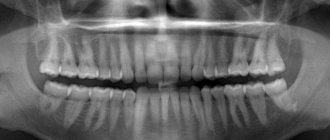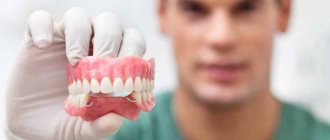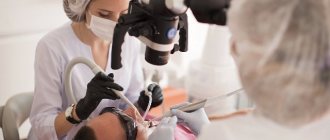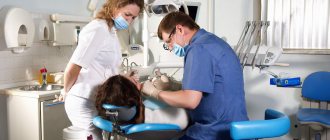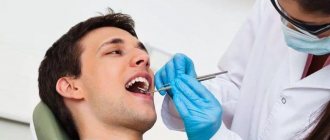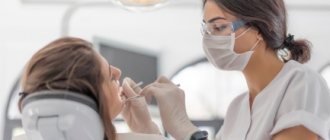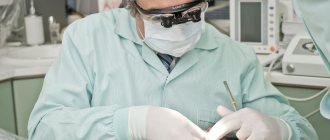The initial treatment for dental diseases begins with an examination conducted by a dental therapist. It is such a specialist that you should contact about problems with toothache or gum disease . Any diseases found in the oral cavity require consultation with a dentist and further therapeutic treatment.
Who is this?
A dentist-therapist is a general practitioner. Functional responsibilities include the initial examination of the patient and diagnosis.
Therapists are also able to classify the diseases of patients who are referred to them for direct help.
Such workers can expertly treat many oral diseases.
The most important functional responsibility of such a specialist is the treatment of caries and the presence of possible complications.
Diagnostic manipulations in the dentist's office
At the first visit, the dentist collects a general and special history. Determines the presence of concomitant diseases, chronic pathologies, allergic reactions. Then he analyzes the complaints and determines the estimated time of onset of the disease.
What is the competence of a dental therapist:
- examination of the oral cavity using a mirror and an angled probe;
- general examination to identify jaw asymmetry, enlarged submandibular lymph nodes;
- analysis of the condition of the gums - bleeding, formation of a periodontal pocket, exposure of the neck and root part.
During diagnosis, palpation and percussion methods (tapping on the crown) are used. Private offices use innovative techniques to examine patients. A fluorescent lamp allows you to detect hidden forms of caries, invisible damage at the initial stage. Thermal testing reveals nerve sensitivity. Dentistry visualizes the oral cavity in great detail.
According to indications, the therapist takes a photo. Modern dental clinics are equipped with computer devices, analogues of X-ray machines. The patient is given a targeted image using a radiovisiograph (portable or stationary).
If necessary, the dentist gives a referral for an x-ray, 3D image, orthopantomogram (panoramic photo), computed tomography.
This is interesting: What to do and how to treat if the lymph nodes under the jaw hurt
What are its functions and responsibilities?
A professional in the specialty in question deals with all issues related to dental problems. The issues of treatment of caries, pulpitis, and periodontal disease are fully resolved.
He also provides consultations on the prevention of all diseases listed above.
Such medical workers examine the patient who contacts them and, if such a need arises, refer the person for examination to doctors of related fields.
The main responsibility of such a professional is the treatment of caries and all possible complications.
These include:
- pulpitis, which is an inflammatory process in the nerves of the teeth, occurs against a background of constant pain, with pressure the pain becomes stronger, in addition, doctors are responsible for filling the canal and eliminating injured nerve endings;
- periodontitis, which are inflammatory processes around the dental tissues, which results in the destruction of all the ligaments that connect the tooth to the place of attachment to the gum and protect it from falling out; such conditions can be the result of caries in the most advanced form, as well as injuries received;
- Periostitis, which is an inflammatory process in the area of the periosteum, called flux, often manifests itself due to infection, is observed in the case of the development of an advanced form of pulpitis or periodontitis, therapeutic procedures include pumping out purulent masses and eliminating affected teeth.
When to contact a dentist
Consultation with a dental therapist is necessary for people who:
- suffer from pain when teeth come into contact with cold or hot drinks or food;
- noted a change in the shade of tooth enamel;
- notice the appearance of whitish spots or stripes on the teeth;
- feel pain when biting food;
- experience pain when eating sweet or sour foods;
- notice swelling of the gums or their redness;
- complain of bleeding gums and bad breath;
- note that the teeth have become mobile.
Doctor's tasks
Typical tasks of a physician in the specialty in question include the following:
- Dental treatment, which involves eliminating carious cavities.
- Removal of nerves exposed to the inflammatory process.
- Restorative procedures affecting areas of tooth enamel, in particular for damaged teeth; his responsibilities also include teeth whitening.
- One of the most important tasks of this medical professional is to perform a depulpation procedure, which includes extracting the damaged nerve, as well as preserving the lining of the dentition.
Treatment of caries and all possible complications is the main task of this medical professional.
They are dangerous to the patient’s health, and the tasks of a professional in this particular area include eliminating such possible consequences.
What does it treat?
A professional in this specialty treats a wide variety of diseases and pathologies of the oral area.
Are you looking for an answer to the question: when do baby boys’ first teeth appear? Follow the link and read our article. If you are interested in the question of what the correct bite of a person’s teeth should be, then we advise you to read the article.
In particular, it is strongly recommended to contact such a specialist in the following cases:
- with bleeding gums, if blood appears on the gums while brushing your teeth, this is a direct sign of emerging problems with the gum tissue;
- with acute, aching pain in the oral cavity, in such situations it is possible to develop inflammatory processes in the mouth, as well as possible pathologies in this area;
- when tumors form on the gums and around the oral cavity, in such cases we can talk about the formation of an abscess and the need to visit a dentist;
- in case of injury to the oral cavity and mechanical damage to the gums;
- in case of traumatic damage to the dentition;
- in case of white and yellow stains on the tooth enamel, as well as other defects in the external cosmetic appearance of the dentition;
- if you have bad breath;
- in case of development of glossitis in any available final variety;
- if you have high tooth sensitivity, especially when alternating between eating foods at different temperatures;
- for irritation of the oral mucosa, which is the result of the development of stomatitis and other diseases of the oral area.
Dentist therapist
Over time, three areas have emerged in dentistry - therapeutic, surgical, and orthopedic . Later, the first began to be divided into the following types:
- Diagnosis of oral diseases.
- Prevention.
- Treatment of diseases of the mucous membrane.
- Periodontology.
- Children's dentistry.
However, the listed specializations are only a theory; in practice, one dental therapist is sufficient, who has the knowledge and practical skills to provide assistance to patients with diseases of the periodontium, mucous membrane, tongue, lips and others. To be precise, there is no difference between a dentist and a dental therapist . A dental therapist treats diseases of the oral cavity, like other specialists.
The main purpose of the dental therapist specialty is the prevention and treatment of caries with its complications. This dentist has a wider range of knowledge within the profession, in contrast to the dental surgeon and orthodontist. The specialization of a dental therapist involves the prevention and treatment of diseases related to the oral cavity. Some dentists have narrower specializations that expand their field of activity, for example, endontium is responsible for the internal condition of the tooth and its root canals. The dentist, in addition to caries, also treats other pathological conditions of tooth enamel:
- Wedge-shaped defect.
- Increased abrasion of enamel.
- Fluorosis.
- Hypoplasia.
- Disturbance in the shape and color of teeth.
Beauty services
Today, some dental technologies that are aimed at improving the aesthetic condition of the teeth and oral cavity belong to a separate area - cosmetic dentistry. The list of their services includes, for example, the following procedures:
- Bleaching.
- Restoration of teeth using composite materials with light-curing properties.
- Fixing various decorations on enamel.
This is not the entire list of services that can be obtained these days. This list of cosmetic dentistry also includes the fight against halitosis - bad breath. Based on this, we can conclude that dental therapists are welcome employees of many large cosmetology clinics, who are valued no less than cosmetologists and plastic surgeons.
Who instead of a periodontist?
Moreover, a dental therapist is able to do the work of a periodontist , treating periodontal disease and gums, if he is not on the staff of a medical institution. The dentist will remove dental plaque, carry out anti-inflammatory measures, and provide other types of assistance. This doctor will also cure cheilitis - diseases of the lips, glossitis - tongue, and help get rid of the pathology of the salivary glands.
Approximately 1% of all activities of a dentist are involved in the treatment of pathologies of the oral mucosa. Particularly important is the diagnosis of precancer and malignant neoplasms.
Non-carious dental diseases
A dentist-therapist treats:
- Hypoplasia of tooth enamel - insufficient development of enamel, which is associated with insufficient mineralization of tooth tissue. It may be a congenital pathology or a consequence of certain childhood diseases. With this pathology, various depressions, grooves and dull spots are visible on the surface of the tooth.
- Fluorosis is a chronic endemic disease that develops due to excess fluoride in drinking water. The pathology is formed before teething and is manifested by enamel defects, which may differ in shape, size and color.
- A wedge-shaped defect, which usually affects the cervical part of the front teeth. This lesion of enamel and dentin is shaped like a wedge. The size of the defect varies from minor damage to the enamel to chipping of the coronal part. The cause of this pathology has not been fully established.
- Pathological abrasion of teeth, in which the surface relief of the tooth is smoothed and its crown part is gradually ground down. The development of this pathology is observed with malocclusion, impaired metabolism and exposure to harmful factors. With such dental damage, caries does not form, but the bite and shape of the face change.
- Necrosis of hard dental tissues, which develops when damaged by acids and alkalis. The lesion affects the entire surface of the tooth.
- Dental hyperesthesia – gradually increasing sensitivity to various stimuli (temperature, etc.).
- Erosion of tooth enamel is a dull spot or defect of various shapes, which is located in the hard tissues of the tooth and, with further development, affects part of the dentin. It can develop due to mechanical damage, endocrine diseases, etc.
- Dental injuries (bruise, crack, tooth dislocation, crown or root fracture, damage to the tooth germ). Injuries can manifest as pain, mobility or change in tooth position, impaired chewing function, etc.
Caries and its complications
The scope of activity of a dentist-therapist includes dental diseases such as:
- Caries is a common lesion in which, as a result of the destruction of the enamel and dentin of the tooth, a cavity is formed on its surface. It manifests itself as pain when eating and exposure to temperature.
- Pulpitis is an inflammatory process affecting the loose fibrous connective tissue of the tooth, which, in addition to tissue cells, contains blood vessels and a nerve. The disease in most cases is a consequence of caries, but can also develop under the influence of chemicals or as a complication of surgical interventions and poor-quality dental fillings. It can be acute or chronic, accompanied by severe periodic pain.
- Periodontitis is an inflammatory process localized in the tissues adjacent to the tooth root. With this pathology, the integrity of the ligaments that hold the tooth in the alveolus is disrupted, and bone tissue degradation occurs. The disease can be infectious (a complication of caries), traumatic and drug-induced, and is manifested by general malaise, pain in the affected tooth when pressed and swelling of the surrounding tissues.
- Periostitis (flux) is an inflammation of the periosteum that develops as a result of pulpitis, periodontitis or trauma. Accompanied by acute pain, swelling of the gums, development of an abscess and swelling of the lips and cheeks on the affected side.
This is interesting: Treatment of inflammation of the throat and larynx, symptoms and causes
Diseases of the oral mucosa
The dentist-therapist treats:
- Stomatitis (traumatic, symptomatic, infectious and specific). These inflammatory diseases of the mucous membrane can be catarrhal, ulcerative and aphthous. They are manifested by swelling of the mucous membrane, the appearance of plaque, erosions or ulcers, soreness and bleeding of the gums, and bad breath. With the ulcerative and aphthous form, general malaise and fever are observed.
- Cheilitis is a lesion of the lips, in which a red border forms on the closure line, and the lips themselves turn pale, swell and crack. It can be catarrhal, eczematous, candidal, glandular and exfoliative.
- Glossitis is an inflammation of the tongue that develops when it is injured, exposed to pathogenic microorganisms, or as a symptom of another disease. It manifests itself as a change in the color of the tongue, difficulties with speech, chewing and swallowing.
This specialist also removes tartar and dental plaque.
How are you connected to other doctors?
The connection between the dentist-therapist and doctors of similar specialties is very direct. It is impossible to imagine working without contacting orthopedists.
They provide the production of dentures of specified characteristics, as well as assistance in cases of disruption of normal chewing function.
It is orthopedists who help all people create a beautiful smile, as well as restore chewing functions in case of tooth loss.
It is the therapists who refer their patients to orthopedists when such a need arises.
It is ensured that diagnostic measures are carried out in the oral cavity, as well as the identification of all emerging damage.
Orthopedic prostheses are made both removable and non-removable. These include bridges, crowns, dental implants and other means of restoring the integrity of the oral cavity.
A related profession to the one under consideration is the work of a surgeon. Unlike therapists, surgeons remove diseased teeth.
Therapeutic dentists refer their patients to surgeons if it is necessary to remove a diseased tooth or several of them.
This happens when a tooth is severely damaged, when its preservation and further activities are no longer possible.
It is also possible to carry out implantation of dentures, crowns and other dental care products. Surgeons are also responsible for removing wisdom teeth that are growing incorrectly.
Such diagnoses are made directly by the therapist during the initial examination of the patient who contacts him.
Children's dentistry
A dentist in a children's office sets himself the task of helping the child's body form a correct bite and a healthy, beautiful smile. In many cases, specialists see no point in treating baby teeth that hurt, and then surgery comes to the rescue.
If it is possible to restore a tooth destroyed by caries, then you can use classical filling technology. Baby teeth will soon fall out on their own, and there is no point in creating long-lasting dentures, but temporary filling of baby teeth allows you to restore chewing function for the next few years before the permanent ones grow in.
To work with children in Moscow, colored filling material is often used, which will be very interesting for kids. Bright colors, which can be used to place fillings, are safe for health, will not harm your child, and cheer up your child!
Colored fillings for baby teeth
If the child is afraid of treatment, then it is acceptable to use nitrous oxide or even general anesthesia for difficult situations. This will help make the process simpler and more convenient, and will also have a beneficial effect on the baby’s psychological state.
Teenagers may need help with tooth growth to create straight teeth. The dental therapist does not undertake teeth straightening and can only refer the patient for further observation and procedures at the orthodontist. However, during the process of alignment and wearing braces, it is still necessary to regularly monitor and consult with a specialist in the therapy room.
By what criteria do you choose a specialist?
It is recommended to take into account some factors by which the selection of the necessary physician is carried out:
- The total length of work experience in a given specific area of work.
- Recommendations from colleagues or related workers.
- A general list of operations that a physician of the profile in question can perform.
- Features of the specialized education received at the university.
- Characteristics of patients who have previously used the services of this particular physician.
- The cost of services provided by the agreed upon professional.
- The order of operations that a doctor of this profile intends to perform.
- Place of reception of an employee of a similar professional background.
Do you want to know how to properly do speech therapy massage for children at home? Then we recommend following the link and reading the article. You can read how many days you can keep arsenic in an adult’s tooth here.
You can find out how to treat tonsillitis in adults at home with medications by following the link.
Only comprehensive consideration of all the above factors can be a reliable guarantee of the correct choice of specialist.
The main criterion is certainly the quality of the services they provide and the speed of all operations.
Cost of services
As a rule, in clinics under state jurisdiction the services of such a specialist are free. Private dental structures create a specific structure for visiting specialists and a subsequent payment scheme for their services.
On your first visit, a predetermined fee will be charged; all subsequent visits are free of charge.
A certain amount of the established amount is determined by the qualifications of the medical specialist, as well as his total work experience in a particular specialty.
The initial cost of visiting a therapist in the field of dentistry is determined in the range from 250 rubles to several thousand for the first visit, depending on the parameters listed above.
An additional fee is established for the use of medical diagnostic equipment, performing various manipulations and installing all kinds of dental structures.
It is not recommended to save on your own health, since in the end it is not cheap. As dental problems develop, they become destroyed and treatment by a specialist will be expensive.
If you seek help from a dental therapist exactly at the appointed time, all problems will be solved and the health of your teeth and oral cavity will be ensured.

